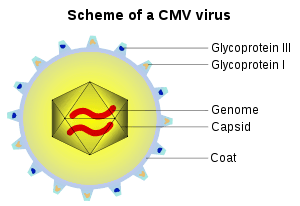
- Image via Wikipedia
A series of promising compounds can cripple all enveloped viruses’ ability to invade cells as well as circumvent any resistance that hobbles traditional antiviral drugs. But will they work outside the lab?
Benhur Lee may have discovered a medical silver bullet that can disable pandemic HIV, exotic Ebola, the common flu and possibly every kind of enveloped virus on the planet. An added bonus is that those viruses likely are unable to develop resistance to the compound.
If this sounds too good to be true, you are not alone. Lee was skeptical himself, and that is why it took four years of detailed work by his lab at the University of California, Los Angeles, (U.C.L.A.), along with collaborators spread across the country before the first paper was published on the potentially revolutionary discovery, on February 16 in Proceedings of the National Academy of Sciences.
Lee is an expert on the viral envelope, the dynamic outside surface of a virus that latches onto a cell, then changes its shape to let the virus enter and infect the cell. This work began as part of a biodefense grant from the National Institutes of Health, screening a library of 30,000 compounds for activity against the envelope of Nipah virus, an emerging infection first identified in 1999 in Malaysia.
Nipah is so deadly that work with the virus itself can only be done in biosafety level 4 (BSL-4) labs where researchers wear tightly sealed hazmat suits with internal oxygen supplies. The labs themselves are strongly secured. There are only four in the U.S.
Lee got around that by creating a hybrid virus. He striped off the envelope covering the relatively benign vesicular stomatitis virus (VSV) and added the Nipah envelope to that core. This allowed him to screen the compounds in his lab at the university using much lower BLS-2 safety standards, to see if they inhibited viral entry into the cell.
“One compound (LJ001) looked really good, it had an IC50 of one micromolar [meaning that it inhibited the pathogen at a low concentration], which for an initial read is okay. Most importantly, it wasn’t toxic” to cell cultures, Lee explained.
Mike Wolf, a grad student in the lab, wanted to make sure the compound was specific to Nipah, so he screened it against VSV. When the inhibition curves came back identical, he originally was disappointed because the study’s funding was based on exploring potential therapeutics for Nipah.
Lee, however, encouraged him to be more persistent, and curious. After a series of studies confirmed the activity and lack of toxicity, Lee sent double-blinded samples of the compound and control to a colleague at the BSL-4 lab at the University of Texas Medical Branch at Galveston who tested it against Nipah, Ebola and other viruses. They were shocked when LJ001 inhibited viral entry to all of them.
So Lee pitted it against HIV, a pathogen he had worked with extensively—it worked there, too. “That didn’t make any sense at all to a virologist, because retroviruses have nothing to do with these negative-strand RNA viruses” like Nipah and Ebola, he says.
Related articles by Zemanta
- Compound found that targets wide range of viruses (scienceblog.com)
- Swine flu: One killer virus, three key questions : One Mad Scientist (dvorak.org)
- Emory University School of Medicine and Zirus, Inc. Team up to Create New Class of Anti-Viral Drugs (eon.businesswire.com)
- Pathogenesis Virus (slideshare.net)









![Reblog this post [with Zemanta]](http://img.zemanta.com/reblog_b.png?x-id=8059b5cf-cb1d-4824-ae36-13f2bcd2c5b0)
